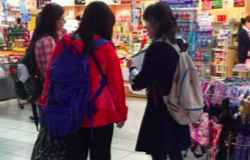PRESS RELEASE
Results of an Independent Survey by SRC
TOKYO – June 6, 2016 – We at Survey Research Center Co., Ltd. (head office in Arakawa-ku, Tokyo: CEO Hiroshi Tomatsuri) have conducted a “Survey on Evacuation Actions Taken by Inbound Foreign Travelers to Japan during the Kumamoto Earthquake.”
■Survey Background
The Kumamoto earthquake refers principally to the foreshock that occurred on April 14 and the main shock two days later on April 16, 2016. The survey was performed by approaching inbound foreign travelers to Japan who were afflicted by the earthquake in order to determine what means they took to evacuate and the problems they faced during the process. As inbound foreign travelers to Japan are expected to increase in number, our objective is to collect data in order to explore possible approaches to disseminate information during times of disaster, as well as understanding what environment can best serve these visitors.
■Survey Outline
・Research location: Departure lobby of the International Terminal Building of Fukuoka Airport
・Survey respondents: Inbound foreign travelers to Japan who were in any part of Kyushu during the period of April 14-22, 2016
・Methodology: Interviews by foreign language proficient interviewers using a questionnaire
・Question subjects: Where respondents had been staying when the earthquake occurred, whether they received evacuation instructions at their accommodations, problems they faced at the time the earthquake occurred, etc.
・Valid samples: 115 (of which 34 were those who had been staying in Kumamoto or Oita at the time of the foreshock or main shock)
・Research period: Thu. April 21 and Fri. April 22, 2016
■Summary of the Survey Findings
▼Problems Faced During the Earthquake
“No evacuation manual for foreigners” “Impossible to anticipate what would happen to my travel itinerary”
・“There was no evacuation manual for foreigners, so I couldn’t figure out what to do” (36.5%) was the most common response given as a problem faced when the earthquake occurred. This suggests the need to provide an evacuation manual for foreigners.
・The next most common responses were “I wasn’t able to anticipate what would happen to my travel itinerary” (33.9%) and “It entailed huge expenses due to my entire schedule being disrupted” (29.6%), which suggests the importance of itinerary follow-up support after the occurrence of a disaster.
▼Sources of Information
“Websites of my own country” was the main source of information
・The main source of information foreigners used were “Websites of my own country” (40.9%). This indicates that foreign travelers will eventually get access to information if it is provided to the media of each country.
・The responses that followed were “Employees at the place where I was staying” (27.8%), “Japanese speakers who I was accompanied by,” and “Japanese TV and radio” (each given by 20.9%). Only 4.3% gave “Japanese-language government disaster radio, public relations vehicles, fire engines,etc.”
▼Desired types of assistance at the time of earthquake
Demand for “Manual in my native language,” “Evacuation instructions in a language I understand,” and “Information-centers that can provide transportation information.”
・“A manual in my native language distributed” (62.6%) was the most desired the type of assistance after an earthquake has occurred.
・Respondents also indicated a demand for “Evacuation instructions in a language I understand” (58.3%) and “Information centers that can provide transportation information” (39.1%).
Those who had been staying in Kumamoto or Oita during the foreshock or main shock
▼Evacuation actions taken by those who had been staying in the afflicted areas
Over 40% of the inbound foreign travelers to Japan did not evacuate.
・“Public facilities such as nearby public halls” (14.7%) was given the most as the location of evacuation after the earthquake, followed by “A nearby school” and “hotel parking lot” (11.8%). ・Those who answered “I didn’t evacuate” accounted for a sizable 44.1%.
About 30% answered that “Evacuation instructions were given and I was able to understand them” at the hotels they were staying at when the earthquake occurred.
・Responses in reaction to the question on whether there were evacuation instructions given at the hotels they stayed at, and how well those instructions were understood: “Evacuation instructions were given and I was able to understand them” (32.4%), “Evacuation instructions were given but I wasn’t able to understand them because they were in Japanese” (11.8%), “I didn’t understand the evacuation instructions so I looked at how other guests evacuated” (8.8%), “There were no evacuation instructions” (44.1%).
Less than 20% answered that an explanation about how to evacuate was given at the time of arrival. Over 60% answered that they thought that evacuation would have gone smoothly had there been instructions given beforehand.
・17.6% of the respondents answered that they had been given an explanation about how to evacuate when they checked into their hotels.
・Of those who answered that there was explanation about evacuating – or they were not sure if there was – 64.3% believed strongly that giving instructions beforehand would have made the process much smoothier.,10.7% believing that it may have made a difference.
Excerpts of open-ended responses
・Warm towels and water were provided after the earthquake. They called a taxi for us that took us to Hakata. I was impressed by how good the staffs were at the hotel in Beppu. (Hong Kong female /40s) ・There was no merchandise in supermarkets. There was little food available. We were not able to go back to our room. The situation was really scary, so we ended up going back home earlier than we had planned. (Chinese male /50s)
・At the time of the earthquake, there were notifications given in Japanese at the hotel, but we couldn’t figure out what to do because we don’t understand Japanese. (Hong Kong female /40s)
・The earthquake made it impossible to use the train tickets we had purchased. When we went to the office to get the tickets changed, the staff there were not able to help us. (Taiwan female /50s)
Based on independent research that we financed in-house, we conducted this survey to identify facts pertaining to evacuation by inbound foreign travelers who were in Kumamoto prefecture and/or Kyushu area at the time of the earthquakes. We are making the findings available so that they can be applied to the improvement of policies for inbound foreign travelers in times of emergency and disaster.
A List of Survey Research Center’s Research on Disasters
- April 2016: Kumamoto earthquake (survey on inbound foreign travelers)
- 2014: Survey on landslide damage in Hiroshima due to torrential rains
- 2011: Great East Japan Earthquake (recovery study, study on the afflicted areas, survey on post-earthquake psychology and behavior, survey on difficulty in returning home)
- 2009: Suruga Bay earthquake
- 2005-2007: Resident attitudes about returning Miyake Island
- 2008: Iwate-Miyagi Inland earthquake (2008/8/12)
- 2007: Nigata Chuetsu Offshore earthquake(2008/2/19)
- 2007: Noto Peninsula earthquake (2007/7/3)
- 2005: Fukuoka Western Offshore earthquake (2005/7/20)
- 2003: Northern Miyagi earthquake
- 2003: Miyagi Offing earthquake
- 2001: Central part of Shizuoka earthquake
- 2001: Geiyo earthquake
Survey Research Center Co., Ltd.
■Profile of Survey Research Center
・Company name: Survey Research Center Co., Ltd. ・Location: 2-40-10 Nishi-Nippori, Arakawa-ku, Tokyo ・Established: February 1975
・Capital: JPY60,000,000
・Annual sales: JPY5.6 billion (FY2015)
・CEO: Hiroshi Tomatsuri
・No. of employees: 393 in total (198 full-time employees and 195 contracted employees as of Feb. 1, 2016)
・Office locations: 10 nationwide, including the main office in Tokyo and offices in locations such as Osaka and Kyushu
・Affiliated organizations: Japan Association for Public Opinion Research
Japan Marketing Research Association (JMRA)
Japan Society for Disaster Information Studies
Japan Society for Disaster Recovery and Revitalization
・Certifications: ISO9001 (acquired in Jun. 2000) PrivacyMark certification (Dec. 2000)
ISO20252 (acquired in Oct. 2010)
ISO27001 (acquired in Nov. 2015) ・URL: http: //www.surece.co.jp
■For inquiries
Survey Research Center Co., Ltd. (http: //www.surece.co.jp)
P.R. representative: Masato Matsushita (src_support_e@surece.co.jp)
Inquiries about this matter are only being accepted by email. We kindly ask for your understanding.
●All rights reserved. Unauthorized reproduction or duplication of the survey findings is a violation of applicable laws. Please cite “Survey Research Center Co., Ltd.” as the source when quoting.
●All data in the press information is current as of the day of release.
●Please see the Survey Research Center website for all addition survey findings.
http://www.surece.co.jp/src/
●In addition to our survey on inbound foreign travelers, Survey Research Center also plans on doing research on afflicted residents.











